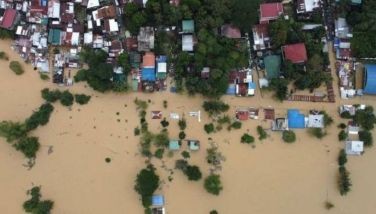PAGASA: El Niño weakens, La Niña may return
MANILA, Philippines — The Philippine Atmospheric, Geophysical and Astronomical Services Administration (PAGASA) said on Thursday that El Niño is gradually weakening and that La Niña may possibly develop this year.
El Niño, a climate pattern associated with extreme heat and drought, is expected to persist from March to May.
“While El Niño is weakening, its effects are still expected in the coming months especially as we’re moving to the drier and warmer months of March, April and May,” PAGASA Administrator Nathaniel Servando said in Filipino during a briefing.
“We advise our fellow countrymen to prepare for the effects of hot and humid weather intensified by El Niño,” he added.
According to the National Disaster Risk Reduction and Management Council (NDRRMC), the ongoing El Niño has caused over P1 billion in damage to the agricultural sector.
In an update this week, the World Meteorological Organization (WMO) said that the 2023-2024 El Niño was one of the five strongest on record.
2023 was the world’s warmest year on record, by far. The WMO said that El Niño contributed to these record temperatures, but heat-trapping gases “are unequivocally the main culprit.”
Conditions are expected to transition to neutral from April to June.
Possible return of La Niña
PAGASA also issued on Wednesday a La Niña Watch, indicating a more than 55% chance of the cooling climate pattern developing in the next six months.
“A La Niña Watch doesn’t always mean that La Niña will occur. There's still a high possibility that it remains uncertain,” said Ana Liza Solis, who heads PAGASA’s climate monitoring and prediction section.
PAGASA stressed that historically, pre-developing La Niña events are characterized by below-normal rainfall. The weather bureau said this suggests a possible slight delay in the onset of the rainy season “likely with the confirmed effects of the ongoing El Niño.”
“The southwest monsoon is weaker during the pre-developing La Niña phase. Historically, there is a higher possibility of more rainfall during La Niña episodes in the last quarter of the year,” Solis said in Filipino.
La Niña refers to the cooling of sea surface temperatures in the central and eastern equatorial Pacific.
- Latest



























